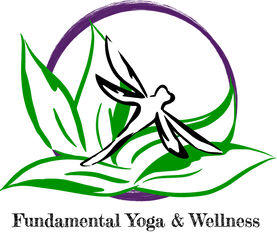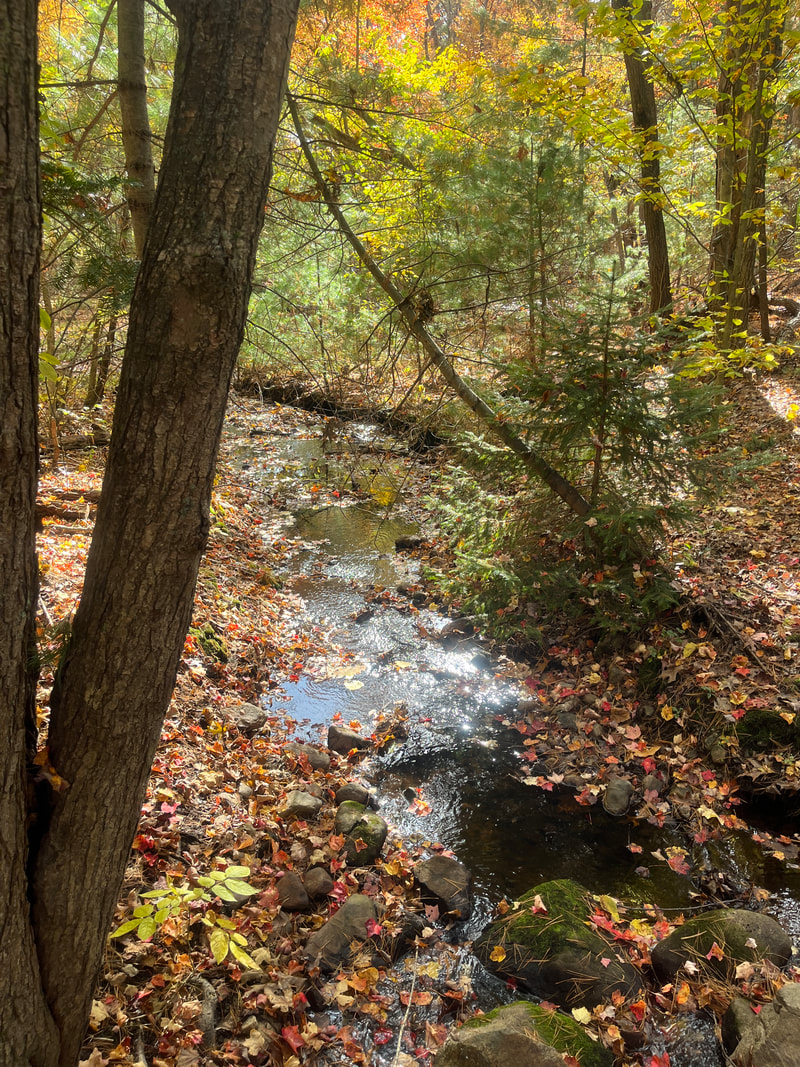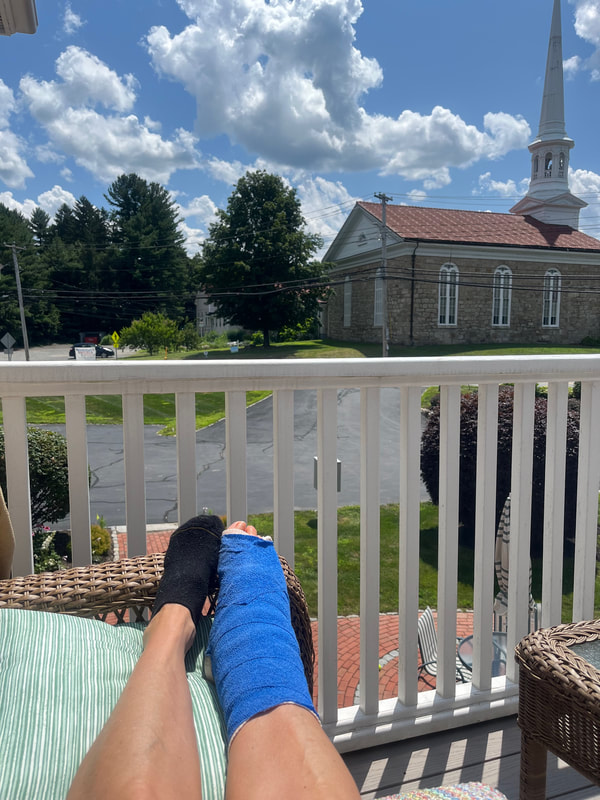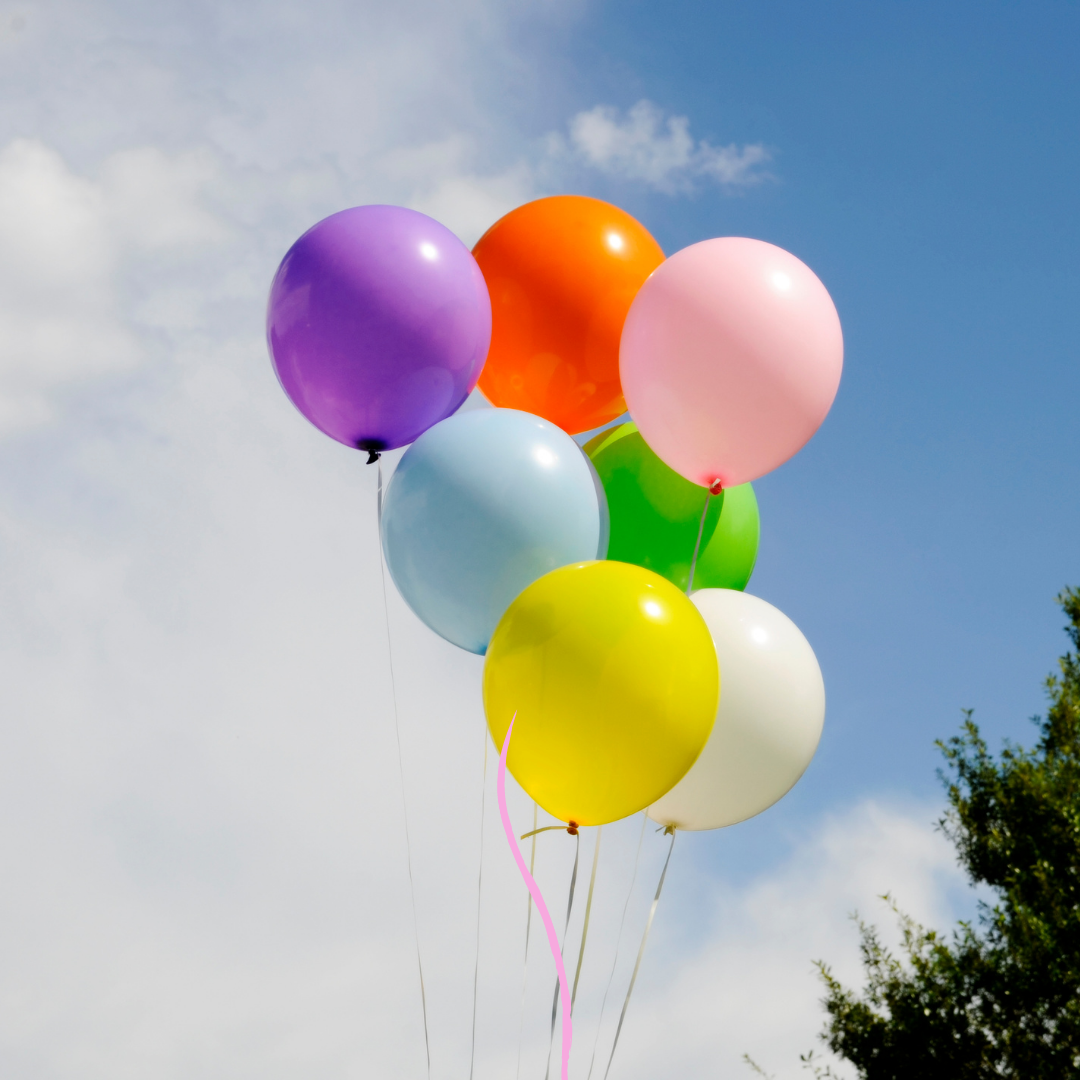|
Difficulties arise for every one of us. They do. They will.
The question we face is, will we make them worse or better? Our yoga challenges us to consider the ripples we make as we move through the world. What self do you offer? Do you make a big, angry splash? Are you a gentle source of support and acceptance? The self-inquiry we undertake and the awareness we cultivate helps us to develop a peaceful stance. Does that mean we won't experience any more challenges? Of course not. Wish I had that magic elixir! But it does help us to maintain our equilibrium and integrity so that we don't increase the disturbance for ourselves or others. And, it helps us to have compassion and grace for all beings, wherever we are on our paths. Let's be clear. We don't have to like or support bad actions, or the things that challenge us. Feel the feels! But do we want these emotions to stick to us and weigh us down? That's when we become dense and muddled and make a huge splash. Imagine you're going through your day and someone snaps at you and treats you unjustly. Ouch! That sharpness can stay with you and magnify as you turn that injustice over and over in your head. And what happens then? You've gotten crabby and you in turn blow at someone. That bad event changes how you react in the world. Or, you can acknowledge, "That was rotten. It hurt." And then figure, "Hey, that person must be hurting to act so hurtfully." Feel it. Acknowledge it. And then, release its hold on you. You can stop the cycle of hurting. That's doable in my little example, which we've all certainly encountered. But what about when the bigger stuff hits? You're in chronic pain? You've lost a job. Someone you love is suffering and you can't fix it. Sitting with your feelings isn't always a one and done situation. Sometimes, it means sitting with each wave of feelings. But our yoga practice is just that. It's practice "being with"--even the tough stuff. The poses we hate. The emotions that come up. Our mental judgements and stories. We develop the courage and capability of meeting each thing...and then letting it move on. And that process shapes us and how we move through the world. The more we "attach" to the stories and feelings, the more they control us. Many years ago my family lived in California and my husband had taken a new job across the country. He had to start it before we could join him, so I was tasked with preparing our house to sell, keeping it clean and supporting us all through the upheaval of leaving—largely on my own. And I had so much fear. I wasn't going to have the house in shape for it to sell for the price we needed. Our kids were going to fall apart. I had to leave the circle of support I'd created and start all over...and so on and so on. One day after yoga I sat with the most dominant fear in that moment, which happened to be about money. I didn't do my normal thing--get busy, tuck the feeling away and carry on. I gave myself space to just be scared. I still remember so vividly, because it was a different response for me then. I imagined holding myself, murmuring soothing acknowledgements to myself, just like I would for someone else experiencing pain. I cried, felt and witnessed my experience. But instead of rehashing the story, I just felt the pain until, for the moment, it was spent. And I realized the tension and inability to breathe were gone, again, for that moment. In that space of peace, I imagined everything working out ok. I didn't have to know how. I could let in that glimmer of possibility. And I felt better. The gripping fear had dissipated. And I was in a better space to move forward, without all the contraction caused by my smothering emotions. Fast forward, and yes, change occurred. We sold our house. The move happened, with a few glitches but really, it was all ok. In retrospect, it was actually fabulous. But we don't get a crystal ball in the moment. We just have our toolbox. We have the means to keep charging into our lives with the energy of negative fire, or we can embrace the certainty of change and direct our energy. Our emotions can lead us into more mess. More tension. More adrenaline. More wreckage. Sometimes, it can be a catalyst to change something. To learn something, even if it’s simply that we are resilient and supported. And in that space, we reclaim a peaceful stance. We are humans, having a human experience. And that experience is often tough. Will we create secondary pain through our reactions? Or will we use the fire as momentum to learn and grow? Will we spread pain or peace?
0 Comments
Anyone who’s been in my yoga classes for long has heard me give the lemon meringue pie metaphor.
That pie sits there and we jump in. We feast on the bright, glowing yellow and enjoy the light springiness of the white meringue. We enjoy the contrast of the puckery lemon and deep sweetness. And then…we hit a shell. And we recoil as we continue to try to get rid of the sandy grit. Ugh. It seems to go on and on before our mouth is clear. Blech! The question is, then what? Is your whole focus going to be trepidation that you might hit another shell? Or will you turn back and allow yourself to rejoice in all that is good about that pie? Will it ruin lemon meringue pie for you forever more? I know it’s silly, but getting vivid with an image like that really helps me be clear—we don’t control everything that comes our way, but we can work on how we respond and on where we put our focus. Maybe if you made that pie, you’ll take note of something you want to do differently. Maybe you’ll just accept that sometimes that wonderful pie also has some grit. To me, where I direct my focus is direct gratitude practice. Gratitude practices have pretty clearly been demonstrated to lift us. According to “ Giving Thanks Can Make You Happier,” an article in Harvard Health Publishing, August 14, 2021 (Link at www.health.harvard.edu/healthbeat/giving-thanks-can-make-you-happier#:~:text=In%20positive%20psychology%20research%2C%20gratitude,express%20gratitude%20in%20multiple%20ways.), ”…gratitude is strongly and consistently associated with greater happiness. Gratitude helps people feel more positive emotions, relish good experiences, improve their health, deal with adversity, and build strong relationships.” Certainly, it doesn’t erase the challenges we face. But with gratitude, we also acknowledge the goodness in life. This also resonated for me: “In the process, people usually recognize that the source of that goodness lies at least partially outside themselves. As a result, being grateful also helps people connect to something larger than themselves as individuals — whether to other people, nature, or a higher power.” The article names numerous studies which conclude that people who cultivate an awareness of the good in their lives, and especially those who express it (like in a thank you note or a compliment) not only feel better, but they affect the people around them positively! It makes sense. Employers who share positive feedback inspire greater loyalty and effort. Spouses who thank their spouses are both happier. In one example, two psychologists, Dr. Robert A. Emmons of the University of California, Davis, and Dr. Michael E. McCullough of the University of Miami found that those who wrote a few lines each week on what they were grateful for were more optimistic and felt better about their lives than a control group who wrote about irritations. The gratitude group also exercised more and had fewer visits to physicians than those who focused on sources of aggravation. Some optimists are born, but we can cultivate the gratitude awareness skill and change our lens on life. In this article, the author suggests we can call on the past, present or future to find gratitude! Relive and give thanks for positive memories. Slow down enough to appreciate the bounty around us in the present. And choose to be open to the possibility of beauty that may come in the future. Our yoga teaches us the resilience and discipline to stay open. It can be hard. Our biology wires us to stay vigilant to avoid pain. But do we want to hole ourselves away in protective, negative-expecting mode? To our brain, each thought is a reality. We have the choice to create and recreate our reality. Recently while on crutches, unable to set one foot down, I got really fatigued and at one point fell repeatedly over a few days. I began replaying the falls and the trauma, fearing what might happen the “next fall.” I realized finally that I may as well be falling over and over and over as far as my brain went. The more I dwelt on it, the frailer I felt. Yikes! I began by stopping myself every time my monkey mind went to falling. Then I slowed way down and thought of all the tools and resources I had to stay upright. I gave thanks for my strong body, which hadn’t been injured and which was carrying me around despite a challenge. And a strange thing happened. I wasn’t afraid, I didn’t fall again and I found better ways to navigate safely. Oh, and PS, I actually got a lot of little gifts of awareness during the challenge of infirmity. So for me, I choose to love the pie! Several years ago, after a head injury that left me with years of chronic migraines, I read an amazing book called, "Living Well with Pain and Illness: The Mindful Way to Free Yourself from Suffering” by Vidyamala Burch. It’s an amazing book. The thing that’s stuck with me has been these two premises:
SOMETIMES WE WILL HAVE PAIN. We can’t avoid that. But we can avoid increasing our pain! AND EVERYTHING CHANGES These ideas were consistent with our yoga teachings, but her exercises on living with pain helped me take the ideas in just when I felt most hopeless. Specifically, we cannot change that sometimes we’ll experience pain and other stressors, but we can control how we respond to them. Burch says that our most common responses cause “secondary pain.” Yes! We tense and grip and brace, which actually causes more pain. We avoid situations and emotions—and they follow us, prolonging our discomfort. We even cause ourselves pain by clinging to our joys—depriving us of completely being in the moment in each scenario, what we deem pleasant and unpleasant. Everything changes, the “good” and the “bad.” Attaching to either of them can increase our discomfort. Our yoga teaches us the principles of nonattachment and surrender. This quote from the actor Michael J. Fox, whose life has been altered greatly by Parkinson’s disease, illustrates those principles in action. He explained, “If I let it affect everything, it’s gonna own everything. I don’t deny or pretend it’s not there, but if I don’t allow it to be bigger than it is, then I can do everything else.” Now that’s some amazing nonattachment and surrender! As he demonstrates, nonattachment doesn’t mean you don’t care. That would be a huge lie! Of course we care. We don’t have to like everything life sends our way. But we can avoid creating secondary pain and missing out on the gifts that might be hidden in each moment. I’ve been relying on those lessons a lot this year with the physical challenges that have come my way. Our yoga offers us the opportunity to practice and develop the truly difficult skills of staying present and awake, even when we want to flee, wallow and wail. What is that process? We question, gather information, be with what we’re experiencing, feel what we need to feel…and then accept. We accept that sometimes we have limitations. Sometimes we have pain. Sometimes we’re bored, frustrated, angry. And we accept that those are part of our human condition. And what’s next? Then there’s action. Sometimes that action is surrender, releasing your expectations of how you thought something “should” be. Oh, those are some shackles to pain! Letting go can be the path to clarity on the right way forward. Sometimes it’s accepting how something is now, and working to shift it. Maybe it’s recognizing a weakness and taking action to grow strength there. Maybe it’s activism, communication, getting educated or just being with yourself or someone else compassionately. We can all learn to flow with our lives more peacefully. What I know is that we can embrace life more comfortably when we let go of our egoic expectations, and when we allow ourselves the time and space to explore our reactions and get clear about what’s happening in our life. That leads to a more skillful reaction and maybe even some new gifts of understanding and growth! Recently I heard a fantastic talk by Dr. Laurie Santos, a cognitive scientist and Professor of Psychology at Yale who teaches their most popular class in history, “Psychology and the Good Life.” A quarter of undergraduates take this class annually! Based on their response, she figured there are a lot of us who could use a few pointers on cultivating happiness. She created a podcast called, “The Happiness Lab” in which she discusses clinical psychology studies that prove different practices we can use to be happier.
Dr. Santos has found that our happiness instincts are pretty rotten. We think playing an online game, another cup of fancy coffee or holing up in front of the tv for hours by ourselves will be “relaxing” and make us feel better. Rather, she offers three main practices that can increase our feelings of well-being, what I think of as “blue sky days.” As I listened to three of her main suggestions, it struck me how much overlap there is between her suggestions and yoga’s teachings. Here are her take-aways from the podcast she did on Crazy Money with Paul Ollinger. Be More Social and Connect with Others Dr. Santos found that even introverts are happier overall if they connect with people regularly. For instance, she sites studies that find employees are actually happier when they brush up against collogues at least some of the time. That goes against a lot of our instincts! But we’re social animals and we feel better when we connect. Traditionally in yoga, there was an emphasis on creating “sangha,” a community who shares a spiritual journey. This community existed to reinforce learning and practices and offer different perspectives and strengths so the whole could be stronger. For those of us who seek to live our yoga on and off the mat, learning to connect with others and recognizing the humanity in everyone is a powerful way to broaden our worldview and grow our compassion for ourselves and others. We all know that coming to yoga class offers more than just the poses. Otherwise, we’d only watch videos. It also gives a chance to share our journey, hear one another’s stories and keeps us coming back. Dr. Santos recommends stretching yourself. She suggests, when you’re in line (for that pricey coffee!), instead of whipping out your phone, strike up a conversation with someone else in line. Remark on their cool shoes. Resist the urge to be a hermit and put yourself out there. Find regular times to be around others. Go to the grocery store if you can. Join a group for some fellowship. Get to those yoga classes and connect with others even if it takes a little effort. Focus On Others In our culture today, advertisers happily sell all kinds of products, touting self-care as pampering ourselves into happiness. What we don’t realize, according to Dr. Santos, is that we are actually happier when we do something nice for others (as long as it’s not continually at our own expense!). Thus, doing for others is PART of our self-care! In our yoga practice, we seek connection to ourselves as a means of refining ourselves and connecting to the greater whole more effectively. We’re instructed through the yamas and niyamas on how to treat others and ourselves. Jason Crandall, one of my teachers, says, “…my practice has slowed me down, softened me, and helped me become more clear and responsible in everything I do.” We learn that contentment comes not just from pleasing ourselves but in interacting from a place of integrity and compassion. That gives us a deeper peace than any facial or coffee could! Dr. Santos said that once our basic needs are met, happiness doesn’t increase with “more.” She says we’re programmed to keep hoarding away and research finds that even the super-rich aren’t satisfied with what they have for long. It feels good momentarily, but then we wonder, would I be happier with more? So, someone with $50 million dollars will always wonder if they need $60 million to be happy. We get acclimated to our bounty, whether it’s a beautiful yard, money or a good relationship. And, we compare ourselves to those with even more. Tough perspective! The next time you’re a little blue, she suggests looking outward to do something nice for someone else. She sites research that even giving away $2 is a greater boost than buying ourselves something with the same amount. This is an easy task. Giving to others doesn’t always have to be financial. Really listening to others, texting or calling to check in on someone…the possibilities for service and connection are as endless as others’ needs and our own creativity. Be Present and Mindful It won’t surprise experienced yogis, but she also concludes that staying present and mindful also boosts our contentment. “Notice, breath and just be,” she says. Even 5-10 minutes a day can be the reset we need to improve our well-being. It’s good for our nervous system and it boosts our “noticing,” which combats our natural tendency to take things for granted. It’s also an approach to living that is compassionate and makes our life juicier. You can take your mindfulness on a walk, when you’re chopping vegetables or playing a guitar. Another yogi, Stephen Espinoza said, “(As I learned to be more compassionate with myself, …I realized I was treating others in the same way. I discovered that I wasn’t “reacting” in stressful situations the same way anymore and found myself really listening more which was huge for me.” As we learn to listen and be, we respond to our own needs and the world better. That’s happy-making! Dr. Santos hosts a regular podcast called “The Happiness Lab” where she interviews researchers on what we know can help us boost our blue sky days whatever the weather outside. It’s a good listen and, along with our yoga practice, can help us feel fuller and more satisfied. I’m sorry. Is the Frozen movie song stuck in your head now? That wasn’t my intention, but maybe it can be your new anthem?! I’m referring to the concepts we explored all month long around release, what happens when we practice the yoga concept of aparigraha. We typically think about this in regard to possession of physical objects. Acquisition and hoarding can be a huge distraction. But aparigraha also extends to mental and emotional attachments. It can extend to the idea of releasing our need for things to be a certain way.
As a type A who has always had the tendency to seek (the illusion of!) control, the concept of nonattachment resonates immensely with me. When we look at how we operate in the world, it’s useful to consider our tendencies. Does your internal language contain a lot of “shoulds” and “musts” for yourself and others? This is grasping, being completely attached to the ONE WAY things should be, is a huge source of mental pain. It’s also a lost cause! It doesn’t take a genius to know that everything is transient—both the good and the bad. No matter how hard we try to keep what we want and avoid what we don’t, life will move along and bring us change. On the yoga mat, we have the opportunity to let go of grasping and instead adopt a stance of curiosity and playfulness. How freeing to simply notice sensation, focusing on each element of the practice. Through that mindful and respectful stance, we achieve the union of mind/body/spirit . This isn’t easy. We want to look and do and be in the way we think is best/most acceptable. Letting go of our desperate striving for what we think is perfection gives us freedom and peace to be with what is, and maybe even to learn and grow in unexpected ways. And ironically, the more we release our rigid mind and expectations, the more fluid and capable we become. Just like when we force our body into pain and the muscles grip to brace us—our mental rigidity is a distraction that inhibits our progress. Nonattachment is not indifference or avoidance. It’s about the strength and courage to be with uncertainty. It’s about cultivating discipline to stay with the things that challenge us and make us want to run for the hills. Hard emotions, physical discomfort, boredom…these are all things we try to avoid. That’s why we ended our April focus on release with a practice of tapas. Tapas is the way in which we burn away our impurities from two opposing qualities, inertia/stability and activity/overwork. Faced with the uncertainty of life we tend to respond by over-effort, in an attempt to control—or through avoidance and stagnation. Neither of these energies is productive in excess. Yes, we need to relax and chill, but not all the time. Yes, we need to take charge and work hard, but not all the time. An imbalance of either of these energies leads to disfunction. But with the discipline of tapas, the ability to create friction by staying with what challenges us, we can pierce the imbalance, “burn” it away, and come to a harmonious balance. We contain each of these ways of being at different moments. Our practice gives us self-awareness so we can recognize our ruts. It also builds the discipline of tapas that serves us when we’re stuck in one of these imbalances. Sometimes it means we work with silence when our mind wants to stay in a whirl. Sometimes it means pushing our physical limits. Ask yourself, which creates the most emotional or mental resistance? That’s probably what you need! By letting go of judgements and the artificial constraints of our “shoulds,” we can focus on engaging, adapting and growing. We live in harmony with ourselves and the flow of life. When you make peace with yourself, you make peace with the world. Maha Goshananda  Tomorrow is Valentine’s Day. It’s such a strange holiday, it made me think about it more. I decided to do a little reading and found that it has its roots in a pagan Roman festival that celebrated the rites of spring, particularly mating. Valentine’s Day itself was celebrated formally in the 14th century and by the early 1500’s came to resemble what we know—sending formal notes of cordiality, followed later by commercial cards and celebrations. It’s unclear how it got its name, but it’s speculated that it was named after a priest named Valentine who purportedly secretly married couples so men could avoid going to war. Another (or the same) priest who was imprisoned sent a note “from your Valentine” to the jailer’s daughter who had befriended him. (From the Encyclopedia Britannica.) Today, we know it as a “Hallmark” holiday, a pretty commercial venture that can bring both joy and disappointment, as most expectations do. In full disclosure, my husband of 33 years and I don’t celebrate it at all. We jokingly tell each other that “every day is a day of love” with each other. Well, we try. But I HAVE used Valentine’s Day to send a note out every year since my oldest child was born 25 years ago. Then, it was a way to announce my baby’s birth (and then two other January babies) without sending both a Christmas card and a birth announcement! Since then it’s been a time to connect, share a few photos and let people know I care. Fast forward to today, and I’ve decided to make all of February, which in the Northern hemisphere can be long, cold and dark, a month of love—lovingkindness that is! Rather than my typical response to cold, bracing myself with shoulders forward and up around the ears with the heart collapsed, I try to open my heart and get as clear as I can to beam good will toward all. The practice I find most supportive of this effort is called “metta,” a traditionally Buddhist lovingkindness meditation in which we extend caring energy toward ourselves and all others. Teacher Acharaya Buddharakkhita says that as we practice metta, we overcome a transactional sort of love and self-seeking and the “mind becomes universal by identifying its own interest with the interest of all.” It’s usually easy to think of sending love and compassion to those we love. Sometimes we unconsciously send that love with invisible strings, “Love me, love me!” Only when we learn to extend graciousness to ourselves and actually accept it (despite our many imperfections) can we also truly wish all beings well and release the need to “earn” or manipulate for acceptance and caring. We see others as we see ourselves-- striving, doing our best, succeeding and failing, good and bad, and we embrace it all. With it, we begin to love what is vs. what we think life and others should be for a good outcome. Part of the metta meditation extends peace and ease to ourselves and to others. By cultivating an attitude of lovingkindness, peace and ease become more available and our interactions with the world become less fraught. If you don’t believe me, try this meditation practice yourself! There are many, many interpretations of it, but the general idea is to send thoughts of goodwill, devoid of judgement, to yourself, to loved ones, to those in your community and eventually, to all beings, including those who challenge us! Trust that this is the best way to heal oneself and others. This month, we set the intention of cultivating metta throughout our practice. It’s a beautiful self-awareness tool that helps you to unearth the situations, relationships etc. where you fall short of wishing others well. When is it difficult? Where do you shine? How can you create more equanimity toward yourself and others? This is a fun one, and it can be quite profound. |
Taisha WeberI've taught and lived yoga for more than 20 years. I know it can be intimidating. But it can also be fun--and rewarding--regardless of your starting point or challenges. On this blog I share some of the yoga wisdom that sustains me.
Archives
November 2023
Categories |
Photo from {Futuretester | Jason Tester}







 RSS Feed
RSS Feed


